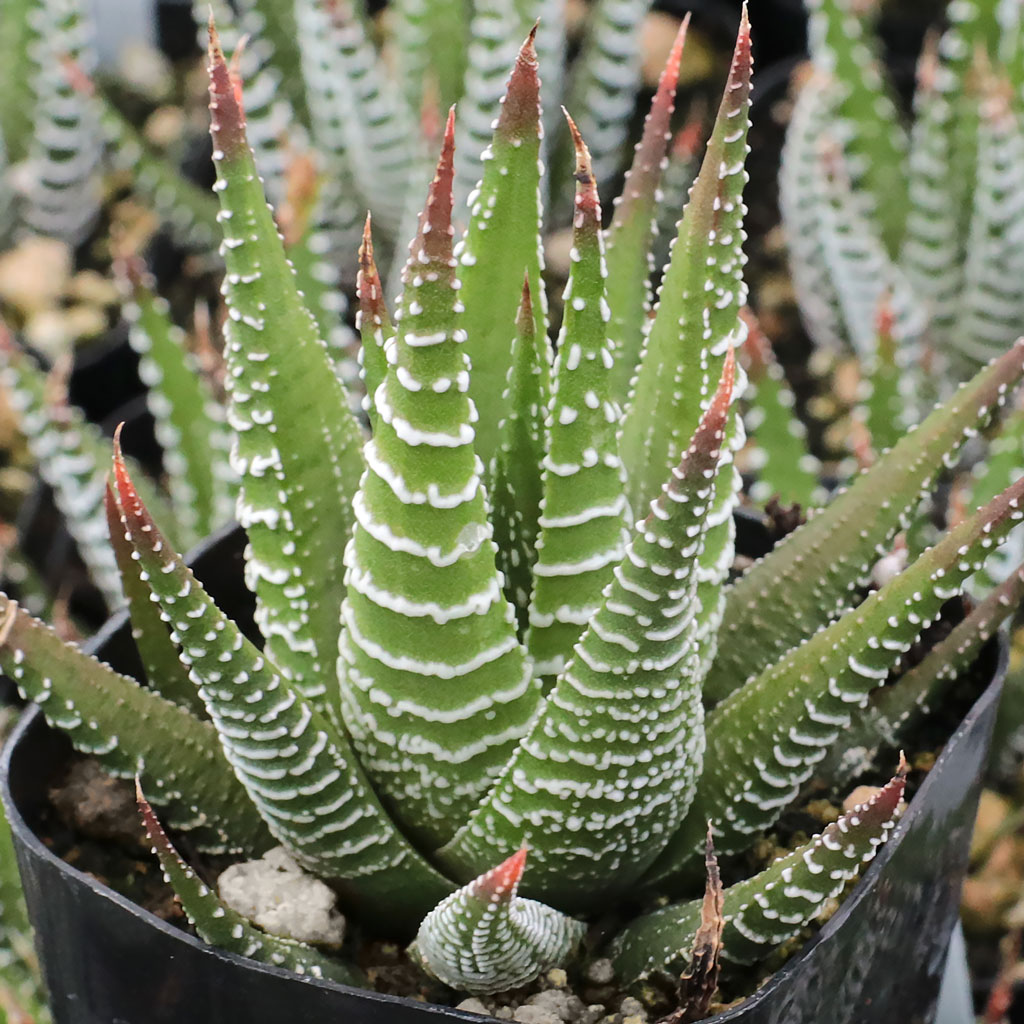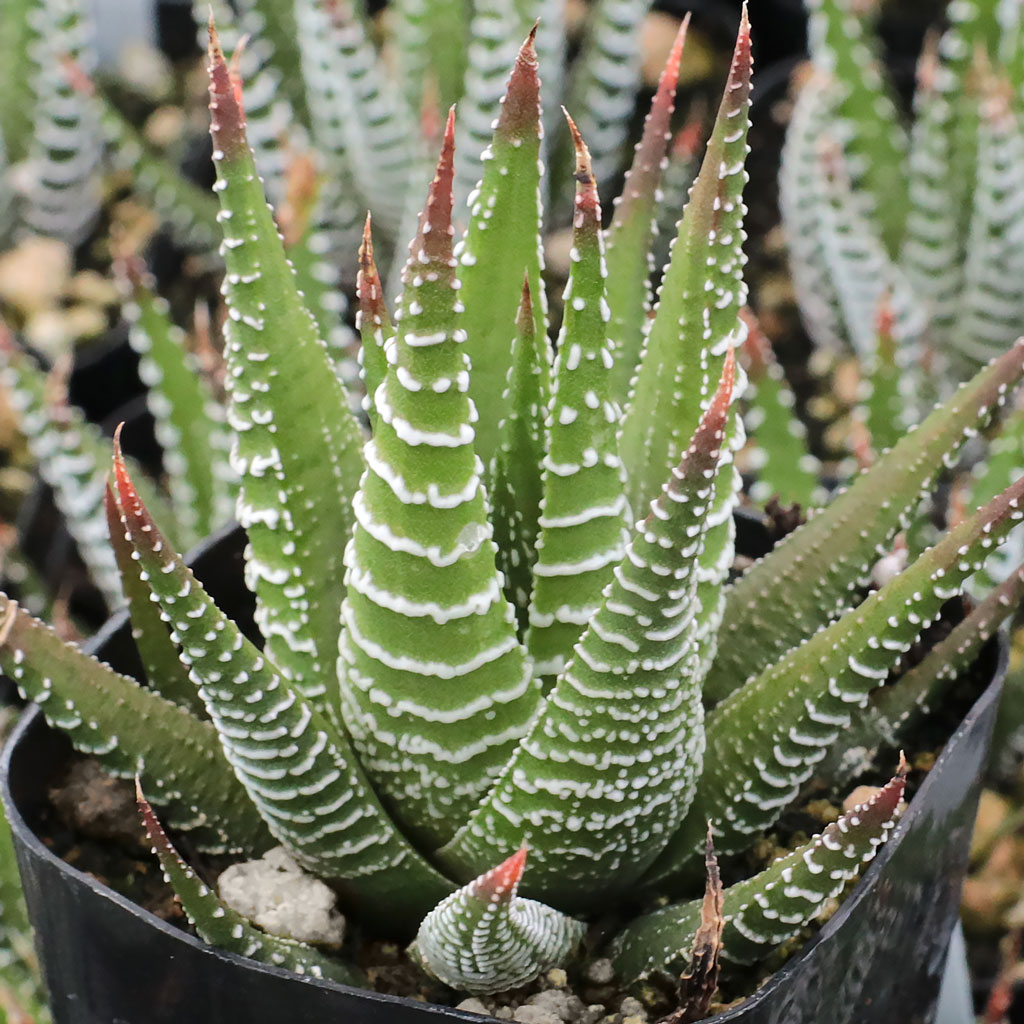Staff Answer
May 03, 2021 - 02:23 PM
I also grow succulents at home in zone 7 so I know it can be a little bit of a struggle to find well suited plants. Here are some recommendations I gave to other people:
1. Anything Sempervivum. Most Sempervivum are zone 5 and the ones that aren't zone 5 are zone 4! I especially like Sempervivum 'Gold Nugget'. It's a Chick Charms® plant that gets very yellow and golden at certain months of the year.
2. Hardy Sedum. These can be quite aggressive in the garden so be ready to manage them. I've enjoyed Sedum 'Mongolian Stardust' recently. It's leaves have interesting serration and it's a cool blue-green color.
3. Opuntia. These cacti produce beautiful flowers that can vary in hardiness but some are even down to zone 5. Also, they produce edible fruit (that some people think is delicious, I remain unconvinced) and, in a survival situation, their sap can be used to quench your thirst!
4. Agave. Only some Agave are hardy to lower zones. One of those is Agave havardiana, which is hardy to zone 5. This one was used by ancient people groups in what's now Texas, Arizona and New Mexico for all kinds of things like fiber, food and drink. I didn't link this one because, sadly, we don't sell it but we do sell other Agave.
5. Orostachys. These are also hardy to zone 5 and look very similar to Sempervivum. However, they're softer and produce longer branches with "chicks" on the ends of them. They're pretty cool but they also die back at the beginning of the winter and regrow themselves in the spring. So even though they'll survive low temperatures, they look dead while doing it. One of our more popular ones is Orostachys malacophylla var. iwarenge or chinese dunce cap. However, we sell a few more types.
6. Delosperma. These are quite aggressive as well. They grow low and make a carpet of really thick, angular leaves and bright flowers. They're hardy to zone 6 and they look like this, but we do sell many more types.
One major advantage of zone 7 is that you probably won't have any trouble growing plants that are in a lower zone like zone 4. Zone 7 areas don't tend to get so hot that they damage plants. I hope this helps!
1. Anything Sempervivum. Most Sempervivum are zone 5 and the ones that aren't zone 5 are zone 4! I especially like Sempervivum 'Gold Nugget'. It's a Chick Charms® plant that gets very yellow and golden at certain months of the year.
2. Hardy Sedum. These can be quite aggressive in the garden so be ready to manage them. I've enjoyed Sedum 'Mongolian Stardust' recently. It's leaves have interesting serration and it's a cool blue-green color.
3. Opuntia. These cacti produce beautiful flowers that can vary in hardiness but some are even down to zone 5. Also, they produce edible fruit (that some people think is delicious, I remain unconvinced) and, in a survival situation, their sap can be used to quench your thirst!
4. Agave. Only some Agave are hardy to lower zones. One of those is Agave havardiana, which is hardy to zone 5. This one was used by ancient people groups in what's now Texas, Arizona and New Mexico for all kinds of things like fiber, food and drink. I didn't link this one because, sadly, we don't sell it but we do sell other Agave.
5. Orostachys. These are also hardy to zone 5 and look very similar to Sempervivum. However, they're softer and produce longer branches with "chicks" on the ends of them. They're pretty cool but they also die back at the beginning of the winter and regrow themselves in the spring. So even though they'll survive low temperatures, they look dead while doing it. One of our more popular ones is Orostachys malacophylla var. iwarenge or chinese dunce cap. However, we sell a few more types.
6. Delosperma. These are quite aggressive as well. They grow low and make a carpet of really thick, angular leaves and bright flowers. They're hardy to zone 6 and they look like this, but we do sell many more types.
One major advantage of zone 7 is that you probably won't have any trouble growing plants that are in a lower zone like zone 4. Zone 7 areas don't tend to get so hot that they damage plants. I hope this helps!





Add New Comment